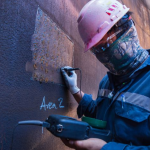Construction to permanent loans are specialized mortgages that help a borrower finance the construction of a new home and its permanent mortgage. This all-in-one loan eliminates the need for two separate loans—one for construction and one for the permanent mortgage—making the process much simpler and streamlined. If you are constructing a new house, understanding how construction to permanent loans work, their benefits, and the steps involved can help you make informed decisions.
What is a Construction to Permanent Loan?
A construction to permanent loan is a single loan offered to cover funds needed in building a home and subsequently converts into a traditional mortgage at the completion of construction. This type of loan finances the building phase and then simultaneously refinances into a permanent mortgage rather than taking a short-term construction loan, which pays for the building stage, followed by refinancing into a permanent mortgage. This type of construction-to-permanent loan automatically turns into a long-term mortgage when the house is done. Most construction-to-permanent mortgages charge interest with equal, fixed payments each month, over 15 to 30 years.
How Do Construction-to-Permanent Loans Work?
Typically, the application process for a construction to permanent loan is just like applying for a traditional mortgage. You apply for a construction to permanent loan by providing your financial information and documentation to a lender. You will be required to provide details about the construction project, including the budget, contractor information, and a timeline for completion.
Approval and Disbursement
Once approved, the lender disburses funds for construction costs. It does not do so all at once but in stages, termed as “draws.” Draws are normally paid on the achievement of milestones such as the completion of foundations, framing, roofing, etc.
Construction Period
In the construction period, the borrower pays only interest on the disbursed loan amount, and that too is for the money that was used. It is a short-term arrangement, wherein relief comes to the borrower in terms of the borrowed amount because the house is under construction.
Completion and Conversion
At the completion of construction, the house is ready, and the buyer moves in. Then the loan, at that time, automatically becomes permanent. Usually, it is completed in this way, but in this type of mortgage, the borrower pays month-to-month like anyone else having a regular mortgage. Interest may be either fixed or variable, as the lender chooses when beginning the loan.
Construction to Permanent Loans: Types
There are two major types of construction to permanent loans:
1. Fixed-Rate Loans
At construction-to-permanent fixed-rate mortgages, this loan fixes the interest at the time of application and locks it throughout the life of the loan. The benefit of such a loan lies in the predictability of it, so the borrower gets a scheduled monthly payment for long-term plans. It is mostly preferred in a low-interest environment, where the borrower can lock in favorable terms.
2. Adjustable-Rate Loans
A construction to permanent loan typically has an adjustable rate; its interest rate may be modified to reflect changes in the interest environment. The loan would then retain a fixed rate for, for example, 3, 5, or 7 years. After that period, the rate automatically resets to match whatever the market does for this type of loan. While lower initial interest rates may be offered, there is a risk that those rates could grow and potentially increase monthly payments.
Advantages of Construction to Permanent Loans
1. Convenience
The best reason why a construction to permanent loan is convenient is that borrowers only undergo the process once. There is no need for a separate application and a second round of documentation. After the construction is complete, there is no second round of refinancing, thus saving time and money.
2. Cost Savings
In most cases, a construction to permanent loan saves money compared to having two separate loans. There’s only one closing cost; therefore, borrowers are not charged refinancing fees. Moreover, in most cases, the loan interest rate is lower than a short-term construction loan, making it cheaper in the long run.
3. Process Simplification
With a construction to permanent loan, the borrower does not have to go through a second application after the house has been constructed. In most cases, the construction of the house is automatically turned into a permanent mortgage right away after the house is completed. This process makes homebuilding easier and smoother, especially when transitioning from construction to permanent financing.
4. Flexibility
Construction loans differ because construction-to-permanent loans cover both construction and permanent financing. This gives more latitude in the loan term and payout structure. In other situations, some lenders will help their clients modify the loan terms to fit their needs. Borrowers can opt for either a fixed-rate loan or an adjustable-rate loan.
Advantages and Challenges
This form of loan is considered to carry more risk for lenders. In fact, the process may become stricter than usual with mortgage terms. Lenders may request additional evidence concerning credit history, more details for income verification, or a detailed assessment of the project to be built.
You only pay interest during the construction period on advances made during the construction period, but the length of the project and loan term may be longer than a traditional mortgage payment.
Its availability is limited because not all lenders offer construction to permanent loans. You may need to make several efforts to identify an institution that offers it. Other institutions might have conditions that depend on your locality or the type of house you are building.
Conclusion
It is understandable if loan takers want a clean, smooth method of financing the construction of a new house while simultaneously securing permanent mortgage financing, avoiding refinancing, and saving on costs. However, it’s always wise to weigh your choices, consider the loan’s terms and conditions, and evaluate the requirements needed for approval. Knowing all there is about construction to permanent loans will ensure your journey to building your home is financially successful.








